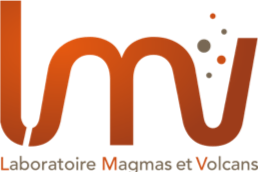
- Cet évènement est passé
Séminaire de Karen Fontijn
26 mars 2019 à 14 h 00 min - 17 h 00 min
Regional Tephrostratigraphic Frameworks: Applications and Challenges
Detailed stratigraphic studies of pyroclastic deposits form arguably the best tool to estimate the frequency and magnitude of explosive eruptions at volcanoes where limited or no historical records exist. As such tephrostratigraphy forms a first-order assessment of potential future eruptive behavior at poorly known volcanoes. Alternations of soils and pyroclastic deposits at proximal to medial distances of the volcano however typically only allow reconstructing eruptive behavior within the Holocene. Moreover, they only tend to preserve relatively large explosive eruptions, of magnitude 3-4 and above, and therefore almost invariably form a biased view of the frequency-magnitude relationships at a particular volcano. Long lacustrine records in medial to distal regions offer significant potential to obtain a more complete view of the explosive eruptive record as they often preserve thin fine-grained tephra deposits representing either small-scale explosive eruptions not preserved on land, or distal ash deposits from large explosive eruptions. Furthermore, these sedimentary records often contain material that can be dated to establish a detailed age-depth model that can be used to date the eruptions and estimate the tempo of activity.
In settings where volcanoes and lakes closely co-exist, integrating terrestrial and lacustrine data therefore allows the development of regional-scale tephrostratigraphic frameworks. Such frameworks provide a view of temporal trends in volcanic activity and mid/long-term eruptive rates on a regional scale rather than at the level of an individual volcano, i.e. in interaction with regional tectonic stress regimes. They also highlight the spatial distribution of deposits from large explosive eruptions, allowing improved estimates of magnitudes of individual eruptions as well as of frequency of impact by volcanic ash in specific regions. Provided such tephra horizons are well characterized and dated they can be used as age marker horizons and help fine-tune age models for palaeoenvironmental studies. In this presentation I will highlight a few key examples of both local and regional-scale tephrostratigraphic frameworks in Indonesia, Chile and Ethiopia, and discuss the multidisciplinary applications as well as challenges posed by data acquisition.


